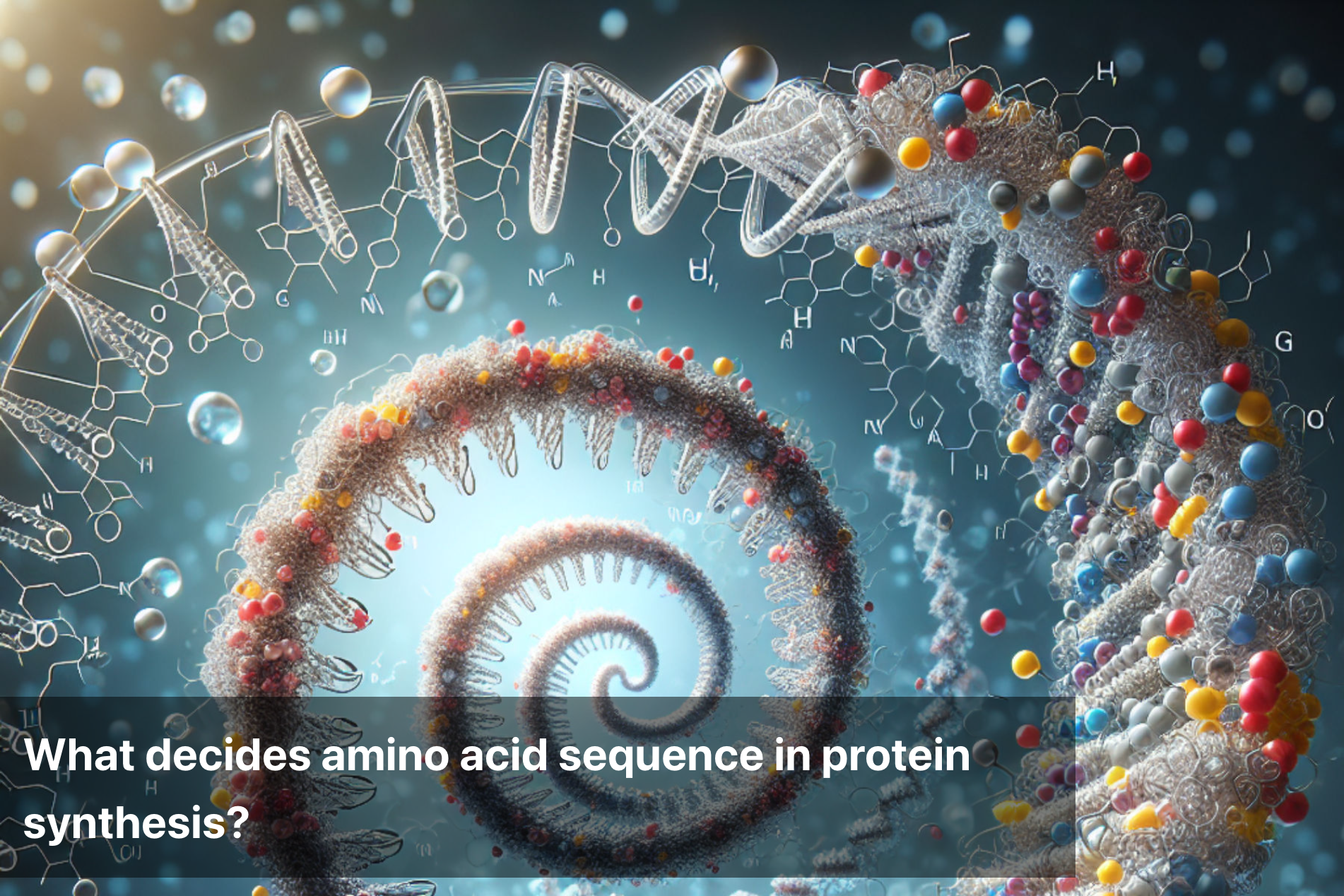
What decides amino acid sequence in protein synthesis?
Protein synthesis is a fundamental biological process essential for the functioning of living organisms. It involves the creation of proteins based on the instructions encoded in our DNA. The sequence of amino acids in a protein determines its structure and function. Understanding the process of protein synthesis is crucial as it governs various cellular activities.
The process of protein synthesis consists of two main steps: transcription and translation. During transcription, the DNA sequence is copied into mRNA in the cell nucleus. This mRNA then moves to the cytoplasm where translation takes place. In translation, the mRNA is read by ribosomes, and tRNA molecules bring the corresponding amino acids according to the codons on the mRNA. These amino acids are linked together to form a polypeptide chain, which folds into a functional protein.
The importance of the amino acid sequence in protein synthesis is paramount. Even a slight change in the sequence can lead to structural abnormalities or non-functional proteins. Therefore, understanding how the amino acid sequence in protein synthesis is decided by the sequence of codons on mRNA is essential for comprehending the intricate process of protein creation.

Transcription and translation
Transcription:
Initiation: RNA polymerase binds to the promoter region on DNA, forming a transcription initiation complex.
Elongation: RNA polymerase moves along the DNA template, synthesizing a complementary RNA strand from nucleotide triphosphates.
Termination: Transcription ends when RNA polymerase reaches a terminator sequence, causing the RNA transcript and polymerase to detach from the DNA.
Translation:
Initiation: mRNA, tRNA, and ribosomal subunits assemble to form an initiation complex at the start codon (AUG) on the mRNA.
Elongation: Ribosome moves along the mRNA, matching tRNA anticodons to mRNA codons and catalyzing peptide bond formation between amino acids.
Translocation: Ribosome moves to the next codon, shifting the mRNA and tRNA positions, and the empty tRNA exits the ribosome.
Termination: Translation stops when a stop codon (UAA, UAG, or UGA) is reached. Release factors bind to the ribosome, causing the completed polypeptide to detach.
Understanding the intricate dance between transcription and translation is fundamental to comprehend how the amino acid sequence in protein synthesis is decided by the sequence of nucleotides in the mRNA. This sequence ultimately determines the structure and function of the resulting protein, highlighting the intricate yet fascinating nature of biological processes.
Genetic code and codons
-
Genetic Code:
The genetic code is a set of rules that specifies how sequences of nucleotides (DNA or RNA) are translated into sequences of amino acids.
It is universal across all living organisms, with few exceptions.
Each three-nucleotide sequence, called a codon, corresponds to a specific amino acid or a stop signal.
-
Codons:
Codons are triplets of nucleotides (three consecutive RNA or DNA bases) that encode for specific amino acids or signal the termination of protein synthesis.
There are 64 possible codons, representing all 20 standard amino acids and three stop codons (UAA, UAG, UGA).
The genetic code is degenerate, meaning that some amino acids are encoded by multiple codons.
AUG serves as the start codon, encoding the amino acid methionine and initiating protein synthesis.
Each codon corresponds to a specific tRNA molecule carrying the corresponding amino acid, ensuring accurate translation during protein synthesis.
Role of tRNA and ribosomes
tRNA (Transfer RNA):
Carries specific amino acids to ribosomes.
Recognizes mRNA codons via anticodon.
Facilitates peptide bond formation.
Ribosomes:
Sites for protein synthesis.
Composed of rRNA and proteins.
Catalyze peptide bond formation.
Move along mRNA during translation.
Understanding the collaboration between tRNA and ribosomes is essential in deciphering how the amino acid sequence in protein synthesis is decided by the sequence of codons on the mRNA strand.

The Blueprint of Amino Acid Sequence in Protein Biosynthesis
In the journey through the intricate process of protein synthesis, we have unraveled the vital role played by each component – from the DNA's transcription to mRNA translation, genetic code, codons, to the partnership of tRNA and ribosomes. This understanding sheds light on how amino acid sequence in protein synthesis is decided by the sequence of codons encoded in mRNA.
The significance of comprehending this process cannot be overstated. The precise arrangement of amino acids determines the structure and function of the resulting protein, influencing all cellular activities. Without this precise orchestration, essential biological functions would be compromised, highlighting the fundamental nature of protein synthesis in sustaining life.
By grasping how the amino acid sequence is orchestrated during protein synthesis, we gain insight into the foundation of biological processes at a molecular level. This knowledge serves as a cornerstone for advancements in fields such as medicine, biotechnology, and genetics, offering a platform for innovation and discovery.
Delving into the intricacies of protein synthesis unveils the marvels of the molecular machinery that governs life itself. Understanding the decisive role of amino acid sequence in this intricate dance provides a profound appreciation for the elegance and complexity of nature's blueprint.
This Blog post is an initiative by Lo! Foods, to provide accurate and Nutritionist / Doctor approved information related to Health. Lo! Foods is India's leading brand for Everyday Functional Foods. Foods designed for specific Health conditions or Needs. Lo! Foods also runs India's largest range of Low Carb Healthy Cloud Kitchens, under the brand names of Lo!, ProteinChef, ATH (All Things Healthy) and DiabeSmart.















Leave a comment
Your email address will not be published.